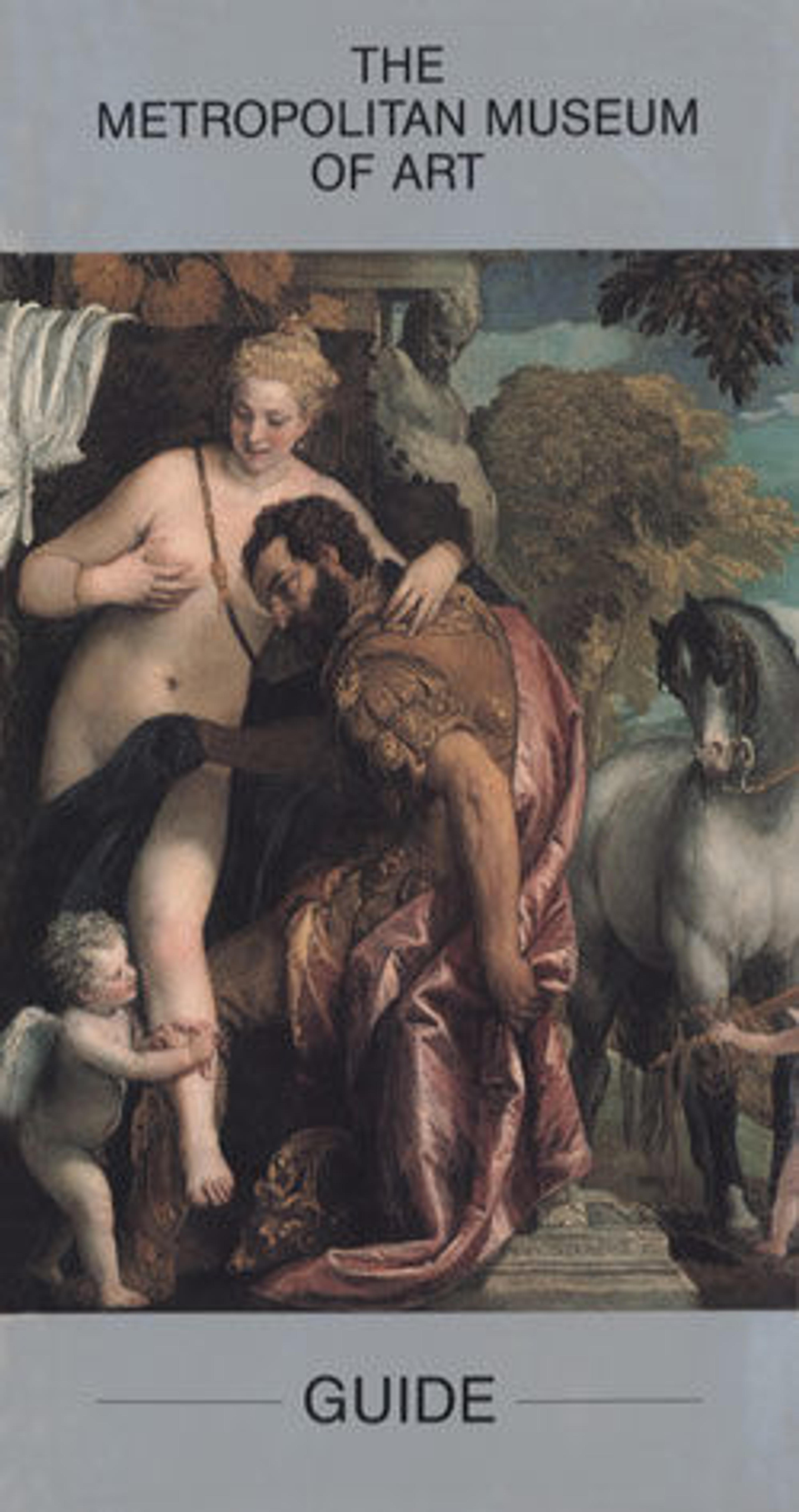Saint Christopher and the Infant Christ
This imposing, well-preserved mural is an early work by Ghirlandaio, one of the most popular painters in late-fifteenth-century Florence and a master of the fresco technique. Its provenance is unknown, and the tradition that it decorated a chapel in the church of San Miniato fra le Torri in Florence is probably wrong: that fresco was described by early writers as about twice the size and was attributed to the Pollaiuolo brothers.
In true fresco technique, pigments mixed with water are applied directly on a fresh (or fresco) plaster wall. As the plaster sets, a chemical reaction occurs whereby the pigment particles become locked into the wall, giving the work great durability. In the fifteenth century, the design for a fresco was often executed with a red pigment, known as sinopia, on a preparatory layer of coarse plaster ("arriccio"). Over this was laid just the amount of finely ground plaster ("intonaco") that could be painted in a single day. Our fresco comprises seven such sections, or "giornate", which closely follow the contours of the figures and drapery.
The painting is in exceptionally good condition. Many details, especially in the landscape, were added after the plaster had dried. Such "a secco" details have usually fallen away.
In true fresco technique, pigments mixed with water are applied directly on a fresh (or fresco) plaster wall. As the plaster sets, a chemical reaction occurs whereby the pigment particles become locked into the wall, giving the work great durability. In the fifteenth century, the design for a fresco was often executed with a red pigment, known as sinopia, on a preparatory layer of coarse plaster ("arriccio"). Over this was laid just the amount of finely ground plaster ("intonaco") that could be painted in a single day. Our fresco comprises seven such sections, or "giornate", which closely follow the contours of the figures and drapery.
The painting is in exceptionally good condition. Many details, especially in the landscape, were added after the plaster had dried. Such "a secco" details have usually fallen away.
Artwork Details
- Title: Saint Christopher and the Infant Christ
- Artist: Domenico Ghirlandaio (Domenico Bigordi) (Italian, Florence 1448/49–1494 Florence)
- Medium: Fresco
- Dimensions: 112 x 59 in. (284.5 x 149.9 cm)
- Classification: Paintings
- Credit Line: Gift of Cornelius Vanderbilt, 1880
- Object Number: 80.3.674
- Curatorial Department: European Paintings
More Artwork
Research Resources
The Met provides unparalleled resources for research and welcomes an international community of students and scholars. The Met's Open Access API is where creators and researchers can connect to the The Met collection. Open Access data and public domain images are available for unrestricted commercial and noncommercial use without permission or fee.
To request images under copyright and other restrictions, please use this Image Request form.
Feedback
We continue to research and examine historical and cultural context for objects in The Met collection. If you have comments or questions about this object record, please contact us using the form below. The Museum looks forward to receiving your comments.
